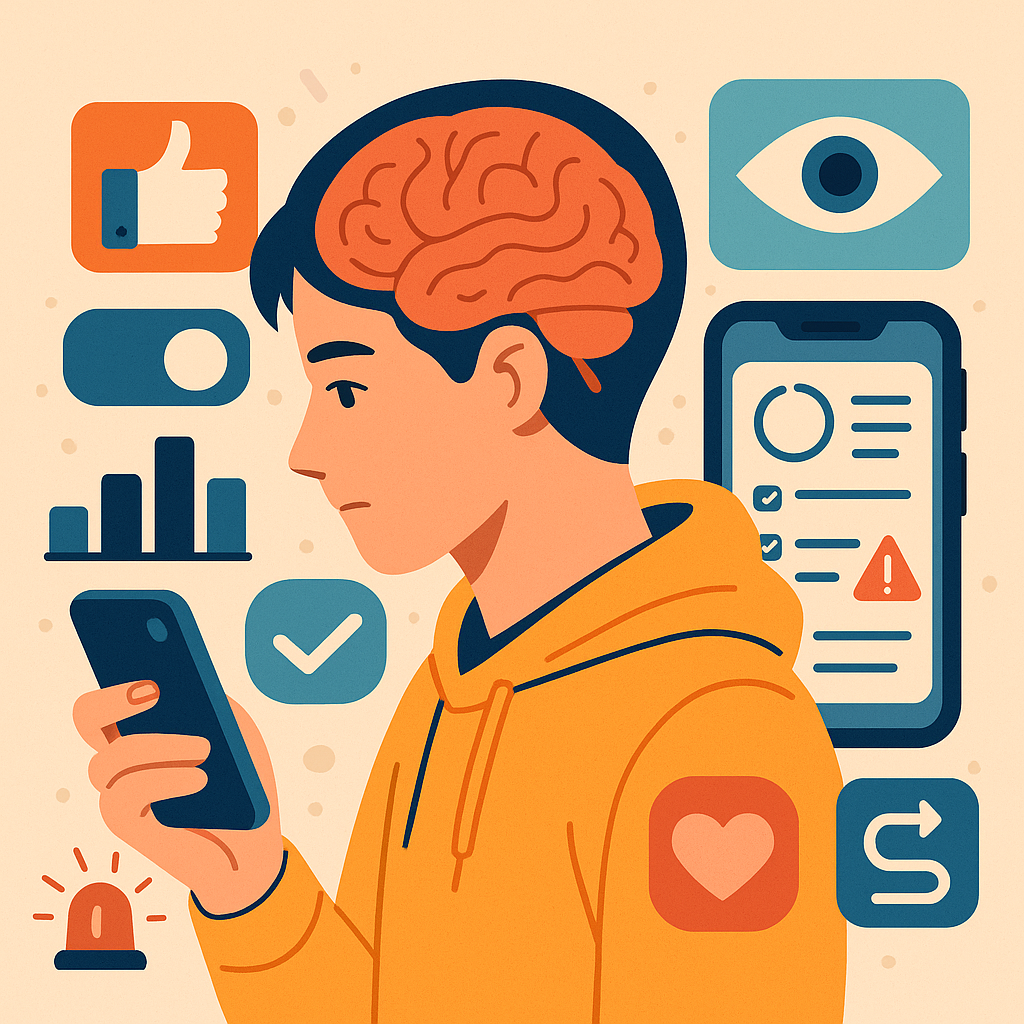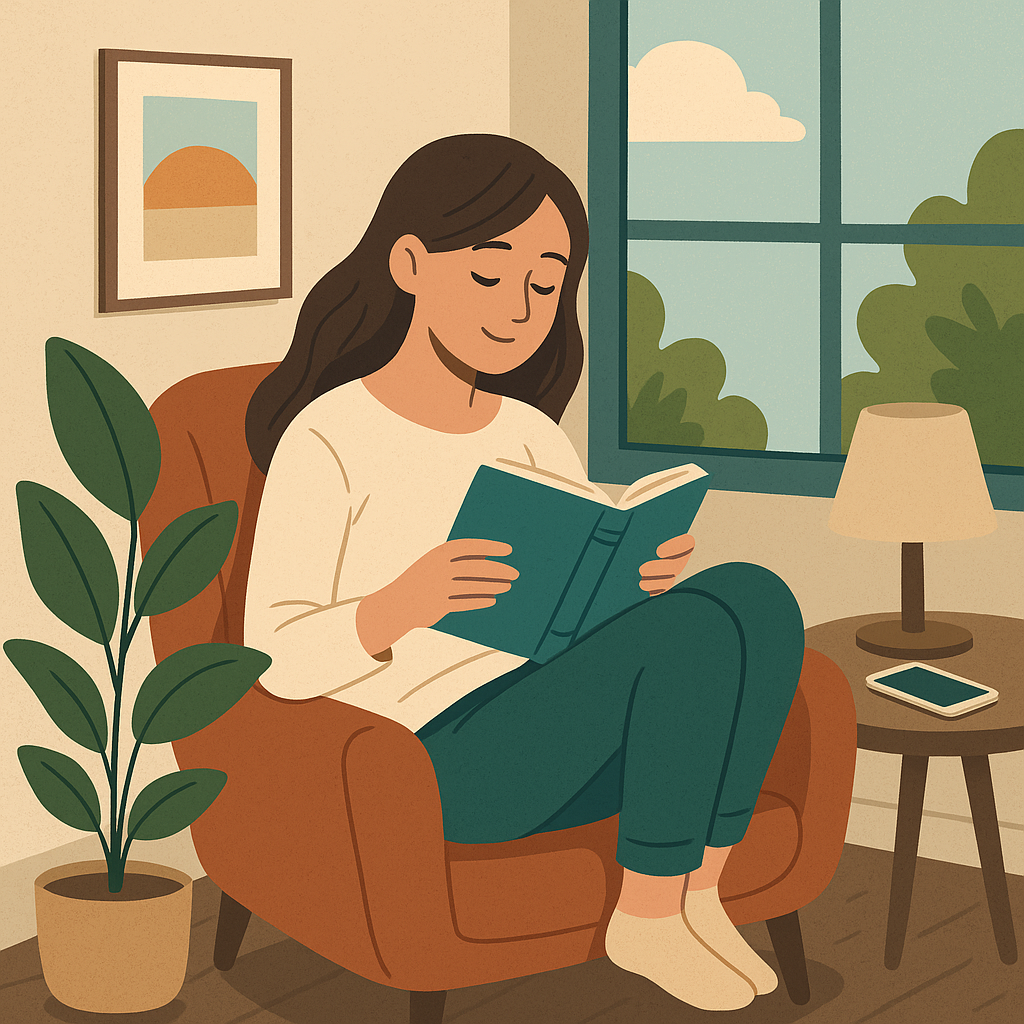App design shapes thinking. It quietly molds how you think, decide, and behave. From endless scrolls to hidden dark patterns, these design choices shape cognition and choices. Let’s explore how—and why—it matters.

1. The Power of Cognitive Load in App Design
App design shapes thinking by managing cognitive load—the mental effort required to process content. Cognitive Load Theory, originally from educational psychology, now informs UX design. Reducing this load leads to clarity and user retention; overloaded interfaces cause errors or abandonment.
- Simplification & consistency: uniform colors, icons, and layouts reduce mental friction
- Clear feedback: animations, tooltips, and confirmation signals help users understand interactions
- Avoiding clutter: minimal screens prioritize content and reduce split attention
Why it matters
Less cognitive load = faster decisions, less frustration. Whether it’s a finance app or navigation tool, smoother flow shapes your thinking—making you feel capable and in control.
2. Dark Patterns: Psychological Tricks Hidden in Interfaces
Designers often use dark patterns—manipulative UI elements—to steer behavior. These create illusions of choice while nudging users toward predefined outcomes. Common dark patterns include:
- Fake urgency (countdowns, limited-time offers)
- Sneaky defaults (opt-out subscription boxes)
- Obscured exits (hard-to-find unsubscribe options).
A large-scale mobile app study found dark patterns across major platforms, exploiting cognitive biases and autonomy wired.com. In finance apps, bright buttons and misleading wording nudge users into hidden fees.
Recent spotlight
The EU consumer group BEUC recently accused fast-fashion app Shein of using dark patterns: countdowns, infinite scroll, and aggressive push notifications to drive impulsive purchases reuters.com.
Impact on thought
These designs prioritize company goals over users’, reshaping choices through psychological triggers that users often can’t resist—sometimes without realizing it.
3. Visual Aesthetics and the Illusion of Usability
Aesthetic-usability effect: visually pleasing apps feel more usable and intuitive—even when functionality is similar.
- Visually appealing layouts improve first impressions and reduce perceived difficulty
- Minimalist, well-spaced elements ease eye movement and decision-making
Why it matters
When apps look intuitive, users trust them more. That trust influences how you think—encouraging deeper engagement and accepting UI-recommended actions.
4. Endless Scroll & “Bottomless Bowl” Interfaces
App design shapes thinking through continuous content exposure—Instagram, TikTok, and news apps all use endless scroll and auto-play to keep us hooked.
A Time.com article explains how these interfaces use the “bottomless bowl” effect: like self-refilling soup bowls, users consume content endlessly for dopamine hits.
Impact
These designs interrupt stop signals—no page bottom, no break—reducing self-control and prompting more screen time. They rewire thinking toward immediate gratification.
5. Push Notifications & FOMOnomics
Notifications aren’t just reminders—they trigger FOMO (fear of missing out) and create habitual checking loops.
Constant push alerts push us toward the app—sometimes diverting from real-life tasks, fostering a “phubbing” effect.
How it reshapes thinking
Your mind gears toward alerts, primed for more screen time and fragmented attention.
6. Choice Architecture: Frame Your Thinking
Choice architecture in UI design presents options in ways that subtly guide behavior. By prioritizing or obscuring options, apps frame decisions toward desired outcomes .
- Placing high-margin features first (anchoring effect)
- Hiding privacy settings in nested menus
- Highlighting certain choices with color or size
Effect
These structured choices make your decisions seem easier—but you’re subtly influenced by design.
7. Mobile Learning Apps: Where Design Helps Thinking
Not all behavioral impacts are negative. Education apps use design principles to aid learning:
- Chunked content
- Interactive feedback
- Minimal distractions
Studies show these apps reduce cognitive load and improve outcomes.
Positive impact
Thoughtful design can help thinking by reinforcing learning and memory.
8. Ethics: When Design Crosses the Line
Ethical concerns arise when design manipulates rather than serves users. Researchers and regulators are calling for accountability.
- Transparent messaging
- Simpler opt-out flows
- Design frictions to prevent impulsive clicks
Why it matters
Ethical design protects decision autonomy, supporting informed and healthy behavior.
9. Emerging Trend: AI-Driven Personalization
AI increasingly crafts personalized app experiences—curated feeds, shortcuts, recommended content—all based on behavior.
While personalization can reduce cognitive load and offer valuable suggestions, it can also trap users in echo chambers or amplify biases in how content is framed.
What to watch
- Transparency: know what data shapes suggestions
- User control: ability to adjust or reset algorithms
- Minimal intrusiveness: don’t let the design override exploration
Summary – How App Design Shapes You
| Design Element | Cognitive Effect |
|---|---|
| Cognitive load optimization | Reduces confusion—clarifies tasks |
| Dark patterns | Coerces decisions against real intentions |
| Aesthetic design | Builds trust and perceived usability |
| Endless scroll | Increases consumption via dopamine-driven loop |
| Notifications/FOMO loops | Triggers habitual interaction & distraction |
| Framed choices | Influences decisions via subtle steering |
| AI personalization | Customizes but can also bias perception |
How to Think Better Around App Design
- Audit notifications: mute non-essential alerts
- Pause during endless scrolls: set time or visual breaks
- Read privacy/opt-out menus: don’t accept defaults
- Choose trusted apps: favor transparency over manipulation
- Embrace friction: a pause is often your friend
- Reflect on usage: ask yourself—am I using the app, or is it using me?
Conclusion
App design deeply shapes how we think—creating clarity or chaos, aiding decisions or hijacking them. By understanding these forces, you can reclaim control over your digital mind-space. Awareness is the first step to smarter, healthier engagement.
References
- Moldstud. “The Impact of Cognitive Load Theory on Mobile App Design.” 2024.
- Gunawan et al. “A Comparative Study of Dark Patterns Across Mobile and Web Modalities.” Northeastern Univ. 2021.
- Mathematics & ACM on dark patterns. 2020.
- Turner et al. “Bottomless bowl” effect. Time, 2018.
- BEUC complaint vs. Shein dark patterns. Reuters, June 5, 2025.
- Cognitive load in m‑learning reduced errors. InformingScience, 2023.
- Split-Attention Effect. Schroeder & Cenkci, 2018.
- Arithmetic effect: Aesthetic–usability. Kurosu & Kashimura, 1995.






